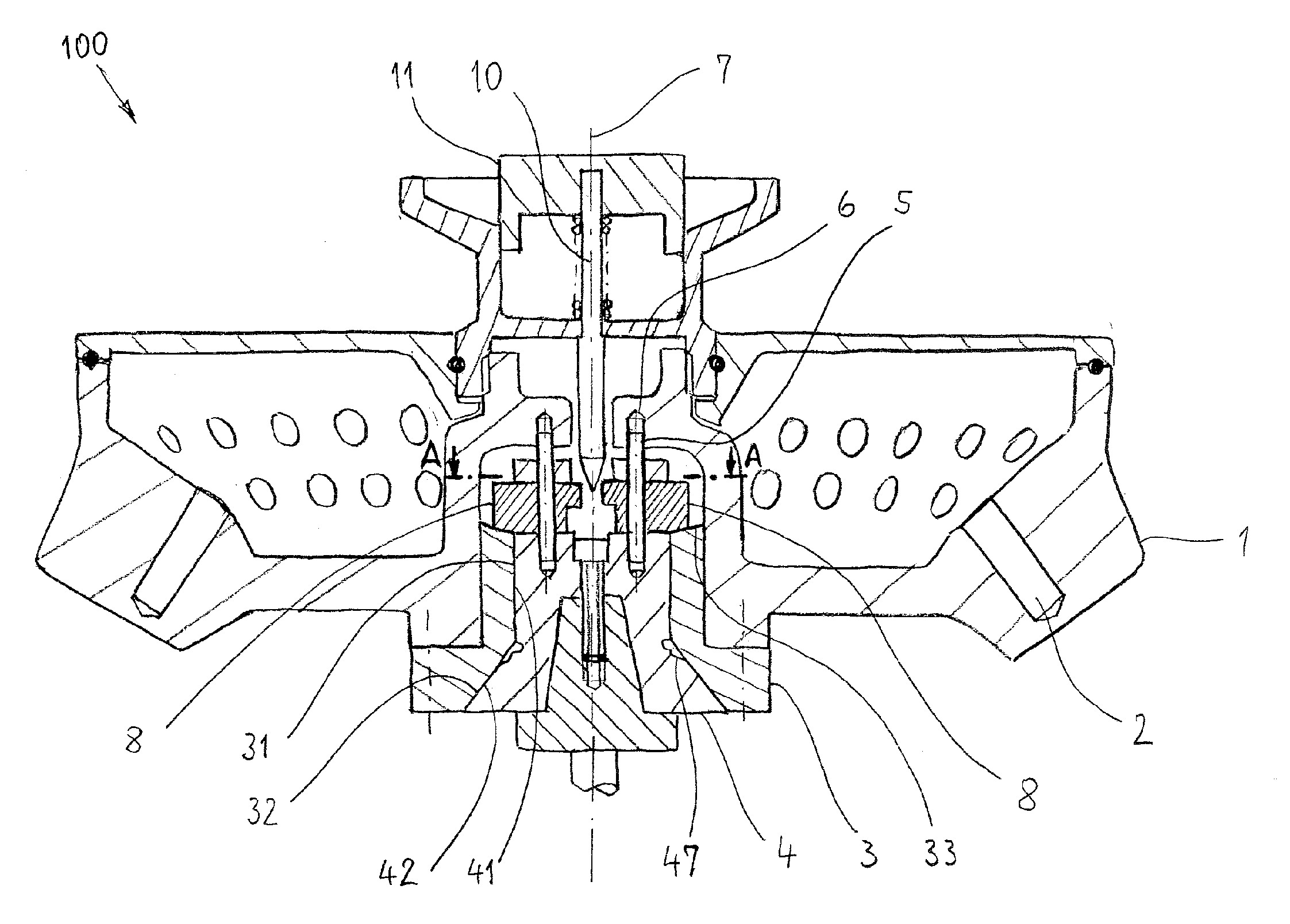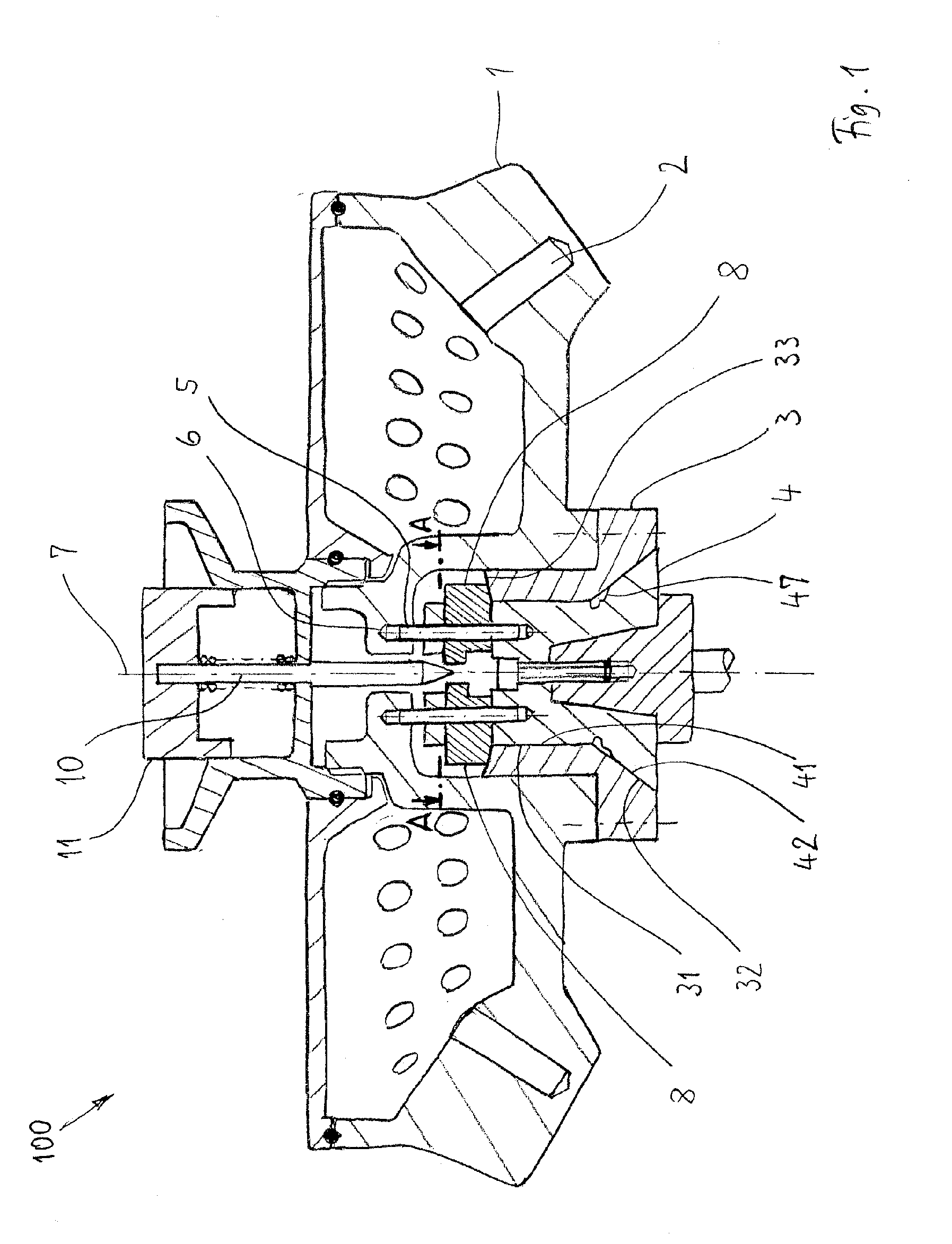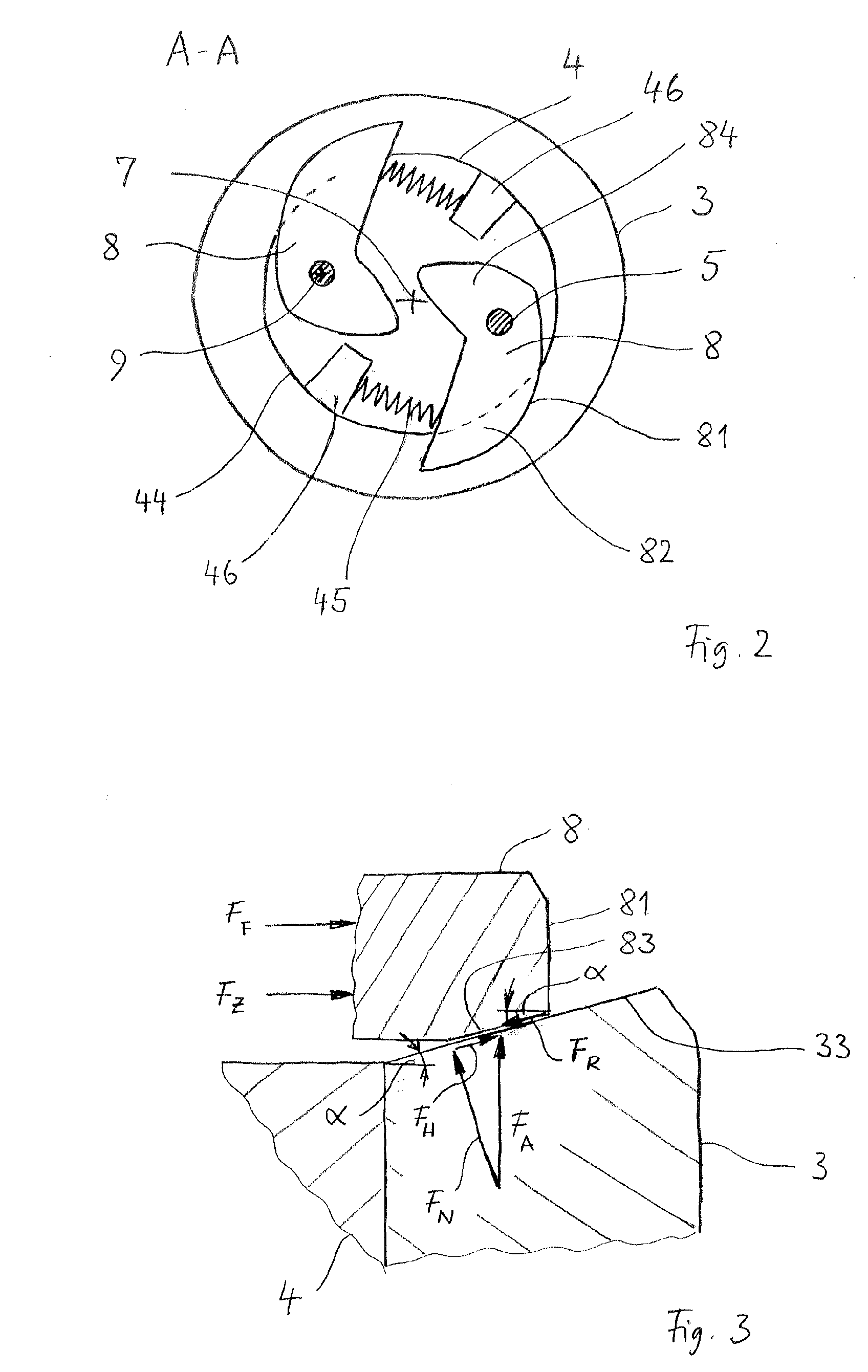Centrifuge With A Coupling Element For Axially Locking A Rotor
- Summary
- Abstract
- Description
- Claims
- Application Information
AI Technical Summary
Benefits of technology
Problems solved by technology
Method used
Image
Examples
Embodiment Construction
[0023]FIG. 1 shows a cross-sectional view of a centrifuge 100 in accordance with the invention without any substructure. Centrifuge 100 comprises a rotor 1 which comprises a plurality of recesses 2 for accommodating sample containers with substances to be centrifuged. A sleeve 3 is mounted on the rotor 1, which sleeve rests in an interlocking manner on a drive head 4. Two vertically extending connection elements 5 in the form of pins are attached to the drive head 4, which pins each engage in an interlocking manner in a recess 6 in rotor 1. In the embodiment as shown in FIG. 1 there are two connection elements 5 which are arranged symmetrically in relation to the rotary axis 7. It is also possible to provide more than two connection elements 5. During a rotary movement of the drive head 4 about the rotary axis 7, these connection elements 5 transmit a torque onto rotor 1, so that it can be made to rotate. It is achieved by the symmetric arrangement of the connection elements 5 that ...
PUM
 Login to View More
Login to View More Abstract
Description
Claims
Application Information
 Login to View More
Login to View More - R&D
- Intellectual Property
- Life Sciences
- Materials
- Tech Scout
- Unparalleled Data Quality
- Higher Quality Content
- 60% Fewer Hallucinations
Browse by: Latest US Patents, China's latest patents, Technical Efficacy Thesaurus, Application Domain, Technology Topic, Popular Technical Reports.
© 2025 PatSnap. All rights reserved.Legal|Privacy policy|Modern Slavery Act Transparency Statement|Sitemap|About US| Contact US: help@patsnap.com



